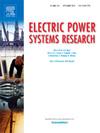Study on factors influencing the impulse withstand capacity of zinc oxide varistors
IF 3.3
3区 工程技术
Q2 ENGINEERING, ELECTRICAL & ELECTRONIC
引用次数: 0
Abstract
The impulse withstand capacity of zinc oxide (ZnO) varistors is crucial to the reliable performance of arresters, and is influenced by factors such as the impulse current waveform, amplitude, and the number of impulses. This paper studied the effects of these factors on the damage modes and aging degree of ZnO varistors through repetitive impulse testing. The test results indicate that side flashover is the predominant damage mode under different impulse current waveforms (8/20 μs and 15/35 μs), and the probability of pinhole and cracking damage increases with both the current amplitude and the number of impulses per group. The aging degree increases with the shortening of the current waveform, as well as with the increase in both the current amplitude and the number of impulses per group. Side flashover significantly reduces the lifespan of ZnO varistors, and the application of glass glaze remains ineffective in preventing this damage. The evaluation of impulse withstand capacity should consider the effect of current waveforms. These findings provide valuable insights for improving impulse test methods and enhancing the impulse withstand capacity of ZnO varistors.
求助全文
约1分钟内获得全文
求助全文
来源期刊

Electric Power Systems Research
工程技术-工程:电子与电气
CiteScore
7.50
自引率
17.90%
发文量
963
审稿时长
3.8 months
期刊介绍:
Electric Power Systems Research is an international medium for the publication of original papers concerned with the generation, transmission, distribution and utilization of electrical energy. The journal aims at presenting important results of work in this field, whether in the form of applied research, development of new procedures or components, orginal application of existing knowledge or new designapproaches. The scope of Electric Power Systems Research is broad, encompassing all aspects of electric power systems. The following list of topics is not intended to be exhaustive, but rather to indicate topics that fall within the journal purview.
• Generation techniques ranging from advances in conventional electromechanical methods, through nuclear power generation, to renewable energy generation.
• Transmission, spanning the broad area from UHV (ac and dc) to network operation and protection, line routing and design.
• Substation work: equipment design, protection and control systems.
• Distribution techniques, equipment development, and smart grids.
• The utilization area from energy efficiency to distributed load levelling techniques.
• Systems studies including control techniques, planning, optimization methods, stability, security assessment and insulation coordination.
 求助内容:
求助内容: 应助结果提醒方式:
应助结果提醒方式:


